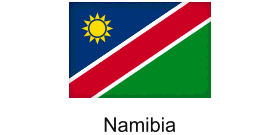 Namibia’s Coastal Boom: Luxury Tourism’s Steady Growth
Namibia’s Coastal Boom: Luxury Tourism’s Steady Growth
Namibia’s tourism sector is witnessing a fascinating interplay of trends, with coastal areas emerging as star performers while the industry navigates fluctuating occupancy rates. April 2025 saw a 55% hotel occupancy rate across the country, slightly trailing the 58.19% recorded in April 2024 but edging past the pre-pandemic benchmark of 54.73% in April 2019. This nuanced performance underscores the evolving dynamics of African tourism, offering valuable insights for travel professionals.
Leisure travel remains the undisputed champion of Namibia's tourism scene, accounting for over 95% of room nights in April. This reaffirms the enduring allure of Namibia's captivating landscapes and diverse wildlife, presenting a wealth of opportunities for travel agents specializing in curated leisure itineraries. While business travel contributed a modest 3.92%, and conference tourism remained marginal at 0.92%, the dominance of leisure travel, particularly in the luxury segment, provides a stabilizing force amidst market fluctuations.
Namibia's coastal region emerged as a clear winner in April, achieving a 60.79% occupancy rate, a significant leap from March's 45.95%. This surge was largely driven by the Easter holiday rush, with domestic travelers seeking coastal escapes. Interestingly, the coast also proved a hotspot for business travel, attracting international delegations linked to Namibia's growing energy sector, resulting in a 10.98% business occupancy rate, the highest across all regions. This dual appeal positions the coastal region as a prime target for travel agents catering to both leisure and business clientele.
While April's occupancy marked a 24.1% month-on-month increase, the year-to-date average of 41.79% still lags behind the 2019 pre-pandemic level of 44.92%. However, Namibia's strategic focus on high-end international tourism is proving to be a shrewd move. Luxury travel, renowned for its resilience during economic downturns, ensures a steady stream of high-spending visitors, bolstering the nation's economy and offering a stable revenue stream for tourism operators. This trend highlights the growing potential of the luxury travel market in Africa, presenting a lucrative niche for travel agents.
Regional performance across Namibia painted a varied picture. The northern region reached 55.5% occupancy, buoyed by local events, while the south saw a rise to 53.65%. The central region, despite some improvement, remained the least occupied at 44.41%. These regional variations offer valuable insights for travel agents, enabling them to tailor itineraries and target specific market segments with precision.
German-speaking countries continued to dominate international arrivals, comprising 40.29% of total visitors. While domestic tourism saw a slight dip to 19.3%, other markets showed promising growth. French tourists accounted for 6.9%, while the Benelux market expanded to 5.31%, thanks to improved air links via Frankfurt and the new Munich-Windhoek route. South African arrivals also ticked upwards to 7.23%. These market dynamics underscore the crucial role of air connectivity in shaping tourism flows, offering valuable lessons for African travel professionals seeking to expand their reach.
Namibia's tourism sector is demonstrating resilience and adaptability in a complex market. The focus on high-end tourism, coupled with targeted marketing and improved air access, is proving to be a winning strategy. By understanding these trends and capitalizing on the opportunities presented by regional variations and evolving market segments, African travel agents can position themselves for continued success in this dynamic landscape.
